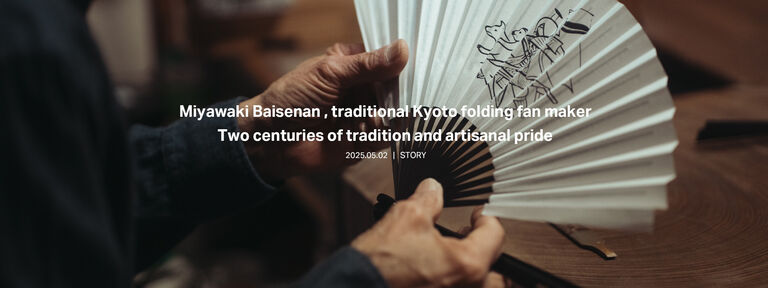
Founded in 1823, traditional Kyoto decorative fan (Kyo-sensu) maker Miyawaki Baisenan is 202 years old.
Making almost all of its products in-house since the Edo Period, its artisanship has been passed down the generations. These fans have been refined to embody beauty and practicality with the best texture, opening, weight and convenience.
The intricate handiwork in a folding fan
A fan is said to pass through the hands of its makers 87 times. There are more than 20 processes involved, and at Miyawaki Baisenan, each and every one is completed by hand. Mr. Yoshiharu Teramura, now 83, set out on this path at the age of 30. For more than half a century, he and his wife have been in charge of the finishing process.
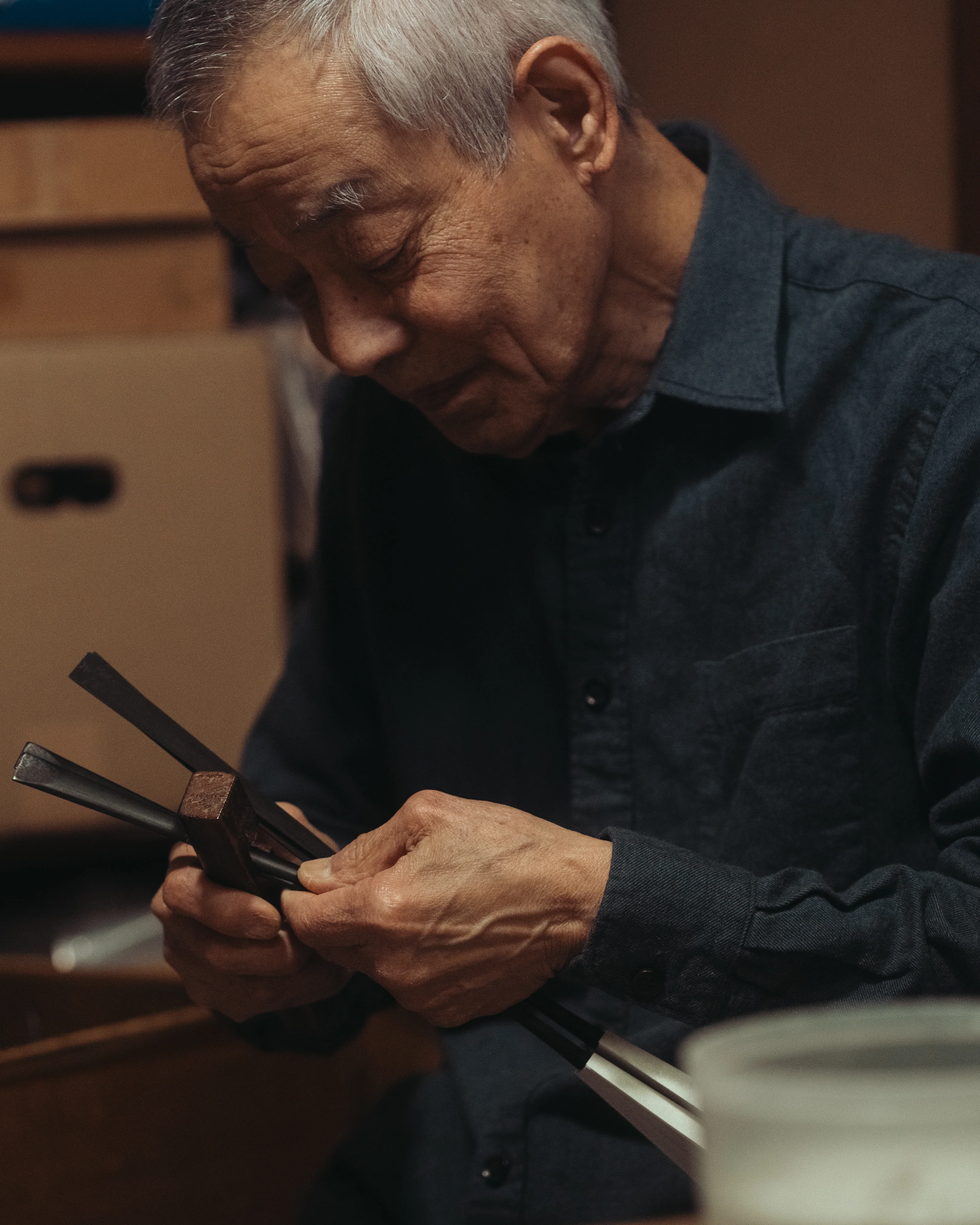
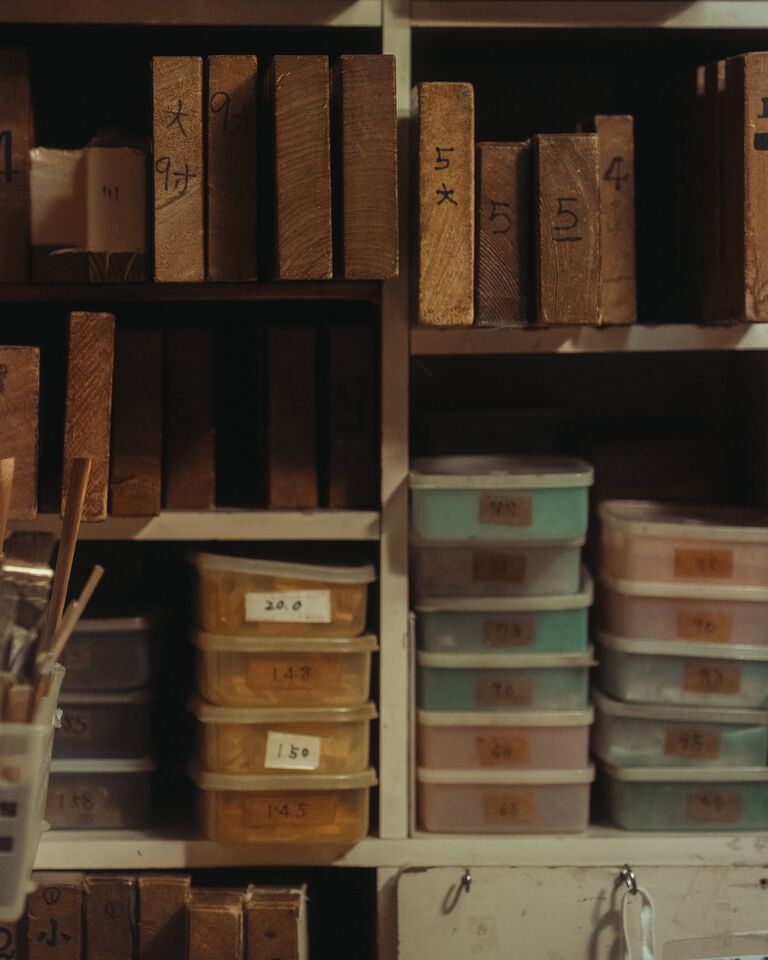
One of the key tasks is naka-ire, or placing the bamboo ribs of the fan into the base paper by blowing into the base paper to create an opening. This is a job that takes physical strength and sharp focus, as it can require as many as 400 breaths every day.
Each bamboo rib of a fan (bone) differs subtly in shape and length, and is worked to fit the length and shape of the fan. Shorter bamboo lengths are more easily inserted through the paper and make the process more efficient, but due to the effect on the aesthetic look of the opening and closing of the fan, the maker always seeks the optimal rib length. On the other hand, a delicate and experienced hand is required to cope with the varying difficulty of inserting the bamboo ribs, depending on their hardness, the way the bamboo is cut and other aspects.
Another process is tame, which requires just the right conditions is the heating of the inside of the outer bamboo frame (oya-bone) to train an inward curve, because heating up bamboo makes it more prone to breakage. This is the process that creates a satisfying snap when the fan closes.
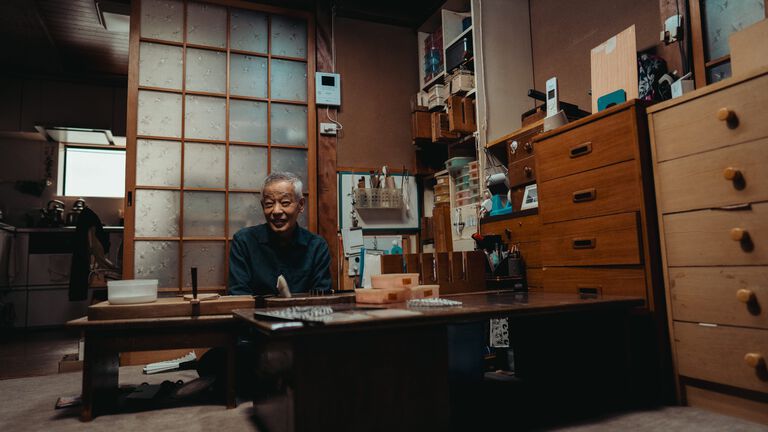
As an artisan, what Teramura values most of all is “making my customer happy by carefully finishing their fan”. Rather than thinking, “I just have to deliver the product” when he receives an order for a single fan, he fastidiously works to perfect the fan until he knows it is ready for the customer. Even a glamourous-looking fan requires a tremendous amount of effort across dozens of different processes. Its quality can vary dramatically depending on the slightest difference in the length of the ribs of the fan or where they are inserted into the base paper, for example. Layer upon layer of delicate crafting creates a single fan that opens and closes beautifully.
Teramura admits, “I am yet to make a fan I can be fully satisfied with”. As he has always said, his wish is to “put care into each and every fan”, even as every one is made with different materials under different conditions, requiring adaptability at all times. With his quiet speech and comportment, Teramura has allowed me to gain a powerful glimpse of the work of an artisan and the deep knowledge of so many traditional techniques.
Three special patterns inspired by folk craft and classical Japanese motifs
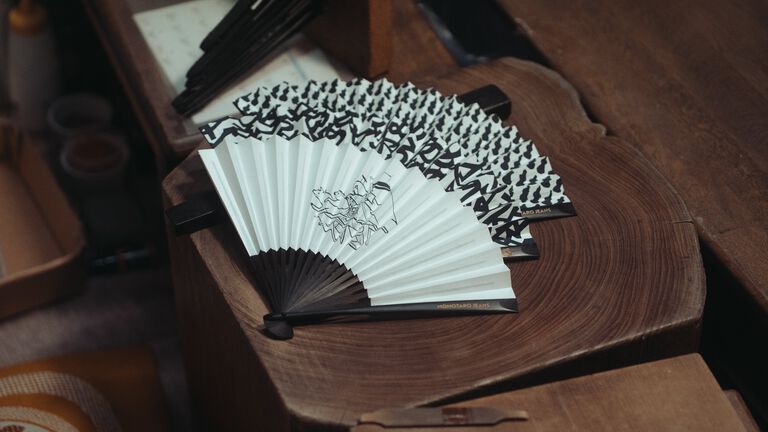
This season, Momotaro Jeans is showcasing three patterns on the most classical style of folding fan, the Juhachi-ken (18 ribs): Momotaro, Hiragana and Gourd. The finish is iconic, with the Momotaro Jeans logo embossed on the fan frame. A satisfying snap sounds when the fan closes, thanks to the artisanal handiwork. Unfurling the fan, the pleasant breeze it creates is buttressed by a hint of original Miyawaki Baisenan musk scent.
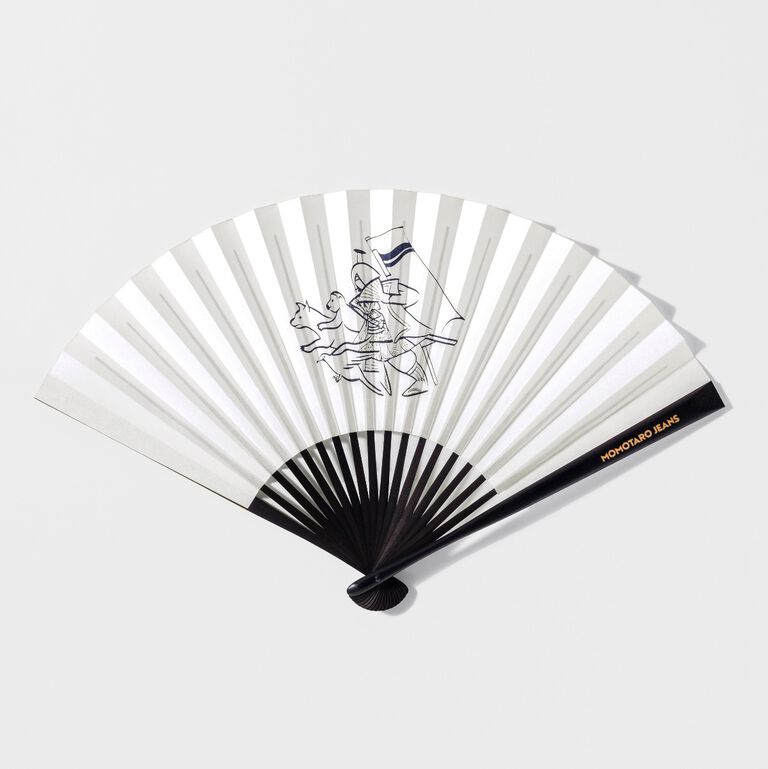
KYO SENSU - MOMOTARO
Design featuring the original Momotaro and his attendants
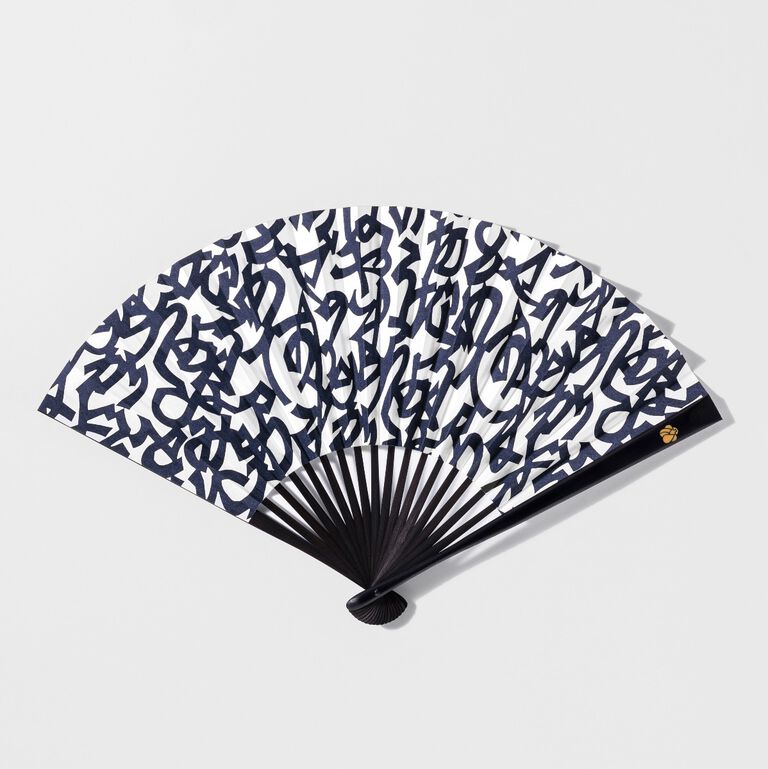
KYO SENSU - HIRAGANA
The design is based on a waka poem in hiragana that Sugawara Michizane is said to have composed about the Kojima Karakoto: “The sound of pine trees and winds on the mountains as I pass by Koto no Ura, where the ship stops and the waves drift over the shore.
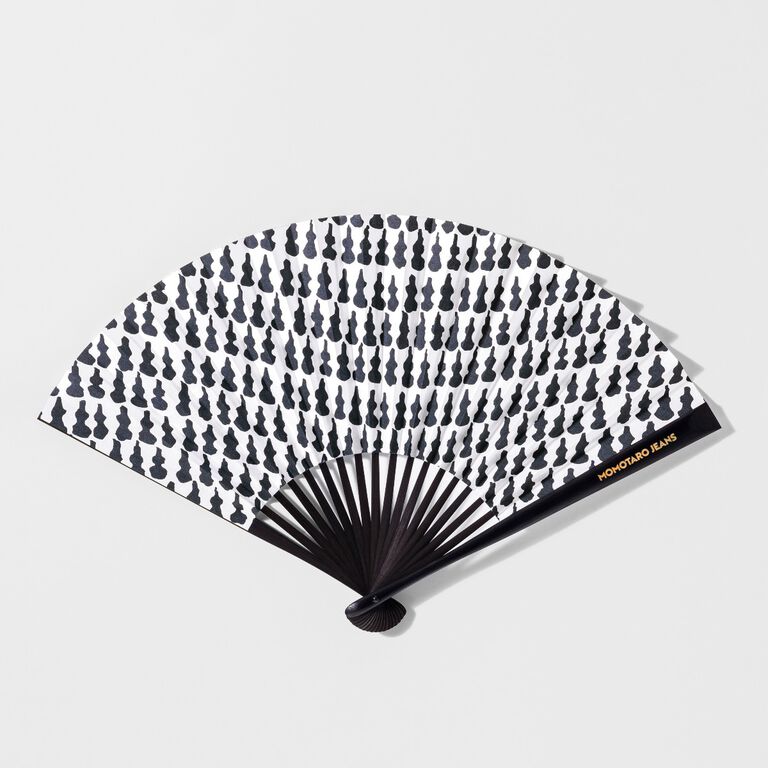
KYO SENSU - HYOTAN
Designs with all-over shapes inspired by folk art pottery and patterns
Miyawaki Baisenan
1823. Hailing from Mino Province (around present-day Gifu), the first generation owner of the store set up the business after buying shares in a Kyoto fan maker Omiya Shimbei. The third generation Shimbei was acquainted with famous artist Tomioka Tessai, who inspired him to rename the company with its current moniker after a famous Kyoto tree, Baisen cherry. Having been a maker and seller of folding fans since its founding, the company now expanded into decorative fans as a handicraft. The shop is stocked with every type of fan imaginable, and it also features a painting on the ceiling by 48 prominent Kyoto artists dating from 1902.